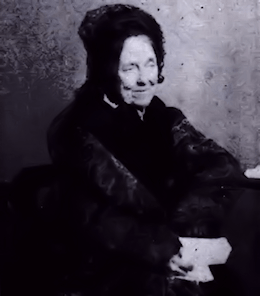Textus Receptus Bibles
Julia E. Smith Translation 1876
| 13:1 | In that day shall be a fountain opened to the house of David and to the inhabitants of Jerusalem, for sin and for putting away. |
| 13:2 | And it was in that day, says Jehovah of armies, I will cut off the names of the images from the land, and they shall be remembered no more: and also I will cause the prophets and the unclean spirit to pass out of the land. |
| 13:3 | And it was if a man shall yet prophesy, and his father and his mother who begat him, said to him, Thou shalt not live, for thou spakest falsehood in the name of Jehovah: and his father and his mother begetting him thrust him through in his prophesying. |
| 13:4 | And it was in that day the prophets shall be ashamed, each of his vision, in his prophesying; and they shall not put on a mantle of hair to speak lies: |
| 13:5 | And saying, I am not a prophet; I a man working the land; for man sold me from my youth. |
| 13:6 | And saying to him, What these wounds between thy hands? And he said, Which I was struck in the house of those loving me. |
| 13:7 | O sword, be raised up against my shepherd, and against the man of my fellowship, says Jehovah of armies: strike the shepherd and the sheep shall be scattered; and I turned back my hand upon the little ones. |
| 13:8 | And it was in all the land, says Jehovah, two parts in it shall be cut off, they shall expire; and the third shall be left in it |
| 13:9 | And I brought the third through fire, and I purified them as purifying silver, and I tried them as trying gold: he shall call on my name and I will answer him: I said, He is my people; and he shall say, Jehovah my God. |

Julia E. Smith Translation 1876
The Julia Evelina Smith Parker Translation is considered the first complete translation of the Bible into English by a woman. The Bible was titled The Holy Bible: Containing the Old and New Testaments; Translated Literally from the Original Tongues, and was published in 1876.
Julia Smith, of Glastonbury, Connecticut had a working knowledge of Latin, Greek and Hebrew. Her father had been a Congregationalist minister before he became a lawyer. Having read the Bible in its original languages, she set about creating her own translation, which she completed in 1855, after a number of drafts. The work is a strictly literal rendering, always translating a Greek or Hebrew word with the same word wherever possible. Smith accomplished this work on her own in the span of eight years (1847 to 1855). She had sought out no help in the venture, even writing, "I do not see that anybody can know more about it than I do." Smith's insistence on complete literalness, plus an effort to translate each original word with the same English word, combined with an odd notion of Hebrew tenses (often translating the Hebrew imperfect tense with the English future) results in a translation that is mechanical and often nonsensical. However, such a translation if overly literal might be valuable to consult in checking the meaning of some individual verse. One notable feature of this translation was the prominent use of the Divine Name, Jehovah, throughout the Old Testament of this Bible version.
In 1876, at 84 years of age some 21 years after completing her work, she finally sought publication. The publication costs ($4,000) were personally funded by Julia and her sister Abby Smith. The 1,000 copies printed were offered for $2.50 each, but her household auction in 1884 sold about 50 remaining copies.
The translation fell into obscurity as it was for the most part too literal and lacked any flow. For example, Jer. 22:23 was given as follows: "Thou dwelling in Lebanon, building as nest in the cedars, how being compassionated in pangs coming to thee the pain as in her bringing forth." However, the translation was the only Contemporary English translation out of the original languages available to English readers until the publication of The British Revised Version in 1881-1894.(The New testament was published in 1881, the Old in 1884, and the Apocrypha in 1894.) This makes it an invaluable Bible for its period.